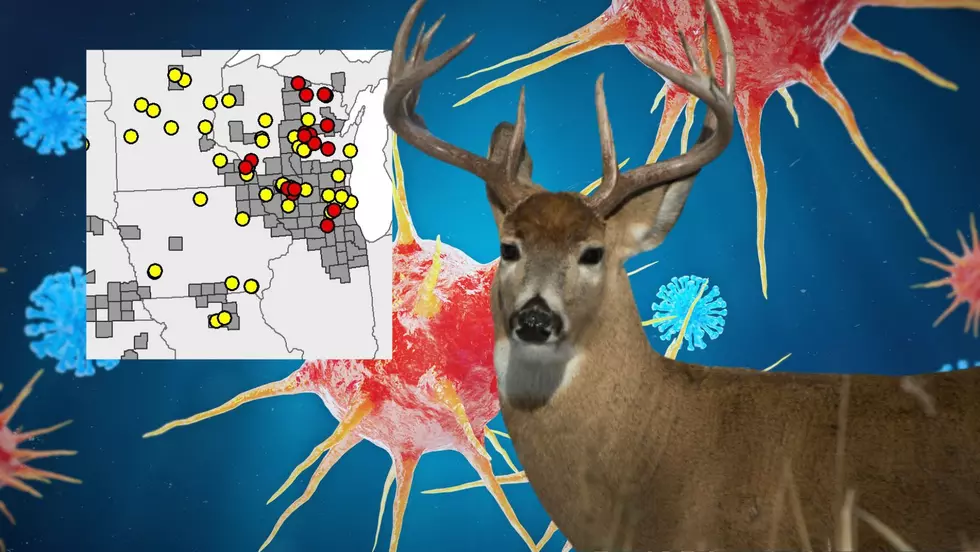
Iowa & Wisconsin To Receive Funds; USDA Send $9.4 Million Nationwide For Chronic Wasting Disease
According to a press release from the United States Department of Agriculture’s Animal and Plant Health Inspection Service, or APHIS, $9.4 million dollars will be provided to 27 states and 6 Tribes or Tribal organizations to further develop and implement Chronic Wasting Disease management and response activities in wild and farmed cervids (members of the deer/elk family).
Deer With Chronic Wasting Disease
State departments of ag, animal health agencies, departments of wildlife or natural resources, and Federally recognized Native American Tribal governments were eligible to submit proposals that develop and implement CWD (Chronic Wasting Disease) management, response, and research activities. This includes surveillance and testing.
Chronic Wasting Disease Map Sept 2022
Funds can also be used to support education and outreach activities to increase awareness about the disease and how it spreads. APHIS gave a priority to States and Tribes that are already combating CWD or are bordering CWD endemic areas; and have either implemented monitoring and surveillance programs, or plan to do so.
APHIS based its funding allocations on priority; collaboratively established with state agricultural and wildlife representatives, Tribal officials and the cervid industry.
Those priorities are:
- Improving CWD management of affected farmed herds and wild cervid populations;
- Improving CWD management of affected areas or premises;
- Conducting additional research on the use of certain sensitive testing technology, known as amplification assays, for CWD; Conducting additional research on predictive genetics; and
- Developing and/or delivering educational outreach materials or programs.
CWD is an infectious, degenerative disease of the deer family that causes brain cells to die, and always leads to the death of the affected animal. The illness makes deer act strange, lose control of their bodily functions, and eventually die. It is the deer equivalent of “mad cow disease." There are other forms of this disease that affect sheep, mink, and goats. Four species are susceptible to the disease: elk, mule deer, white-tailed deer, and moose. The goal is to create new tools and approaches to improve management of wild and farmed cervids at risk.
Here’s the Midwest’s breakdown on funds received:
Farmed Cervid Chronic Wasting Disease Management and Response Activities 2022 Spending Plan
Wisconsin Department of Natural Resources;
- Chemical Inactivation of Soil-bound CWD Prions; $97,608.00
Wild Cervid Chronic Wasting Disease Management and Response Activities 2022 Spending Plan
Iowa Department of Natural Resources
- Using incentivized harvest to empower hunters and landowners to slow the spread of Chronic Wasting Disease; $146,210.00
- Beta testing pooled sampling thresholds against traditional Chronic Wasting Disease testing; $101,492.22
Wisconsin Department of Natural Resources
- Strengthening Hunter-Agency Partnerships for CWD Monitoring and Management through Sustained Outreach and Engagement; $75,780.00
- Deepening Partnerships, Expanding Access: Reducing CWD Transmission Risks by Supporting Proper Carcass Disposal; $150,000.00


